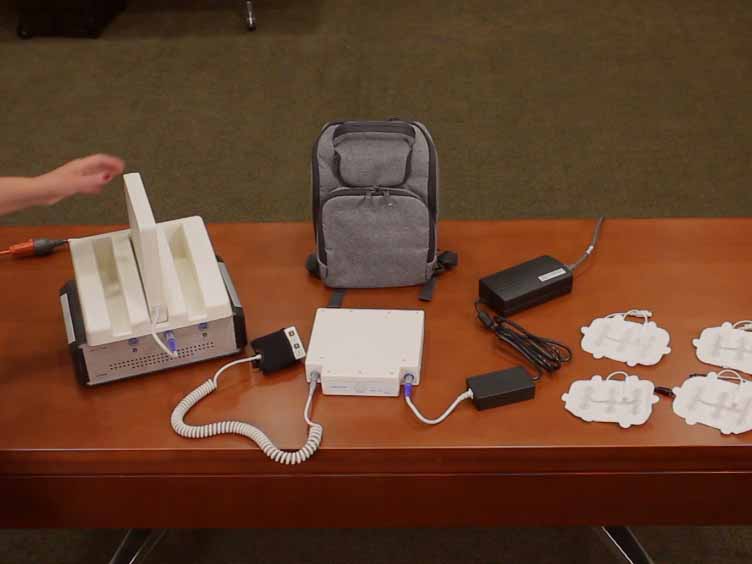Determining Optimal Inhibitory Tumor Treating Field Frequency for Cancer Cells: A Non-invasive In Vitro Method to Assess the Effect of TTFields on Cancer Cell Viability
내레이션 대본
To begin, install TTFields dishes with covers onto a base plate and prepare an additional 8 dishes that will be used for growing control cells. Place a sterile 2-millimeter coverslip on the bottom of each dish. Next, suspend 5 times 10 to the fourth U-87 MG cells in one milliliter of DMEM medium.
The appropriate number of cells plated in each dish depends on the properties of the cell line in use. It is crucial to calibrate it prior to the experiment in order to avoid cell overgrowth.
Pipet 200 microlitres of the cell suspension onto each coverslip such that a drop is formed on its surface and cover the dishes with their lids. Incubate all dishes at 37 degrees Celsius, 5% carbon dioxide overnight to allow the cells to adhere.
Once the cells are attached, aspirate the media from the coverslips using a 200 microliter pipette. Then, carefully pipet 2 milliliters of complete growth medium onto each dish. Gently tap with a sterile pipette tip on the coverslip edges to release any air bubbles caught under the slide.
Afterward, incubate the cells at 37 degrees Celsius, 5% carbon dioxide until TTFields treatment begins. To begin TTFields treatment, remove the base plate from the 37 degrees Celsius incubator and place it into a refrigerated carbon dioxide incubator.
The refrigerated incubator temperature will determine the electric field intensity. It is important to use the appropriate intensity, which is dependent on cell sensitivity to TTFields.
Then, plug a flat cable female connector into the base plate and turn the TTFields generator ON. Open the software dedicated for TTFields in vitro application system. After defining a new study by entering names of the experiment and experimenter, adjust the frequency and target temperature for each dish.
Click on the START button to initiate the TTField's treatment in the software and check if all dishes appear light blue on the monitor, which confirms their proper connection. To re-establish the connection, gently press the dish down and rotate it slowly back and forth until the dish appears light blue on the screen.
After 24 hours of the treatment, stop the experiment in the software by clicking PAUSE. Disconnect the flat cable connector from the base plate and then place the base plate in the laminar flow cabinet.
Then, remove the base plate with the dishes and the control cells grown in standard conditions from their incubators. Replace the medium in all dishes with fresh complete growth medium. Then, place the control cells in a 37 degree Celsius, 5% carbon dioxide incubator and return the base plate to the refrigerated incubator.
Reconnect the base plate to the generator. Continue the treatment by clicking the CONTINUE button. Once the treatment is completed, finish the experiment by clicking the END EXPERIMENT button in the software. Then, save the data uploaded from the system.
After turning the TTFields generator OFF, disconnect the flat cable from the base plate and remove the system from the incubator. Press down and turn the ceramic dish counterclockwise to detach it from the base plate.
Next, aseptically transfer the TTFields treated and control coverslips to sterile Petri dishes containing fresh medium for further evaluation.



